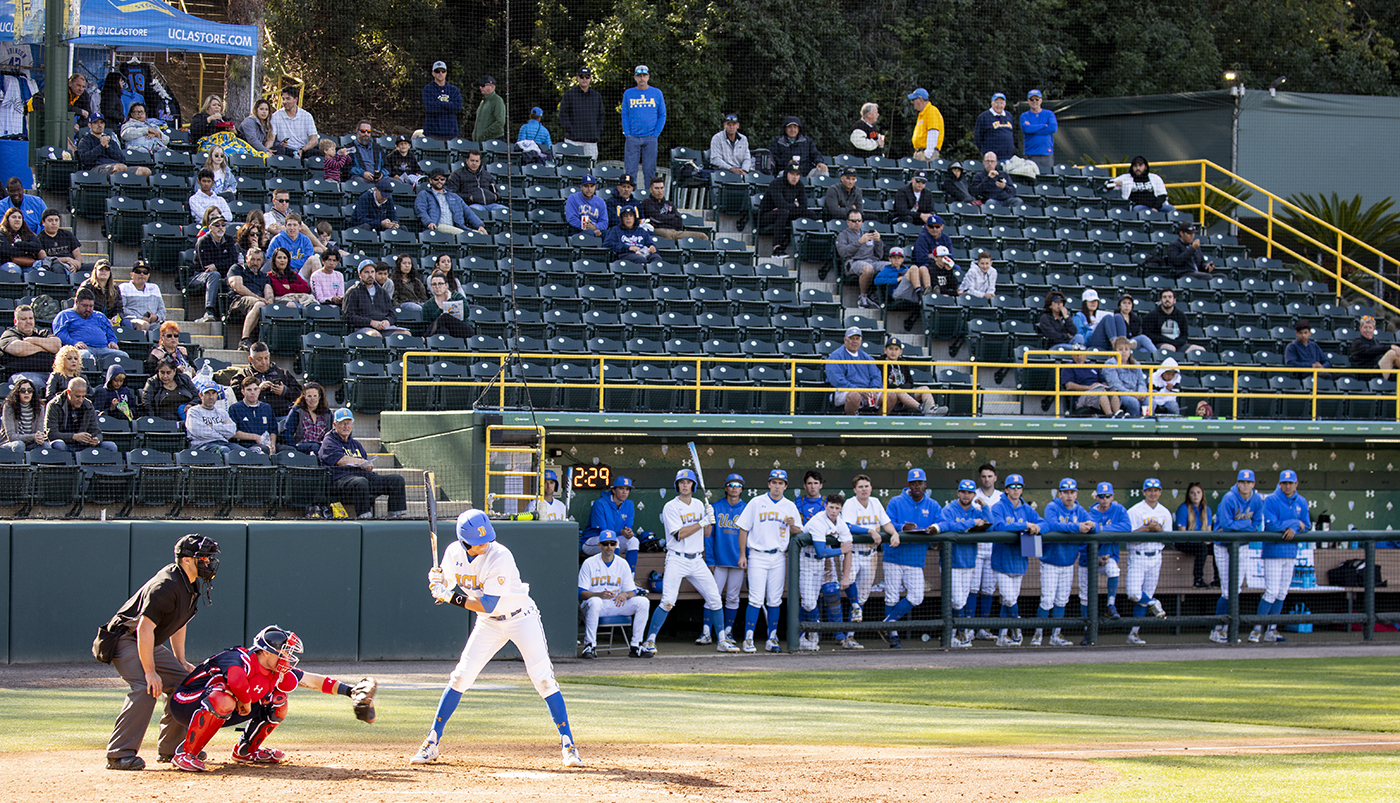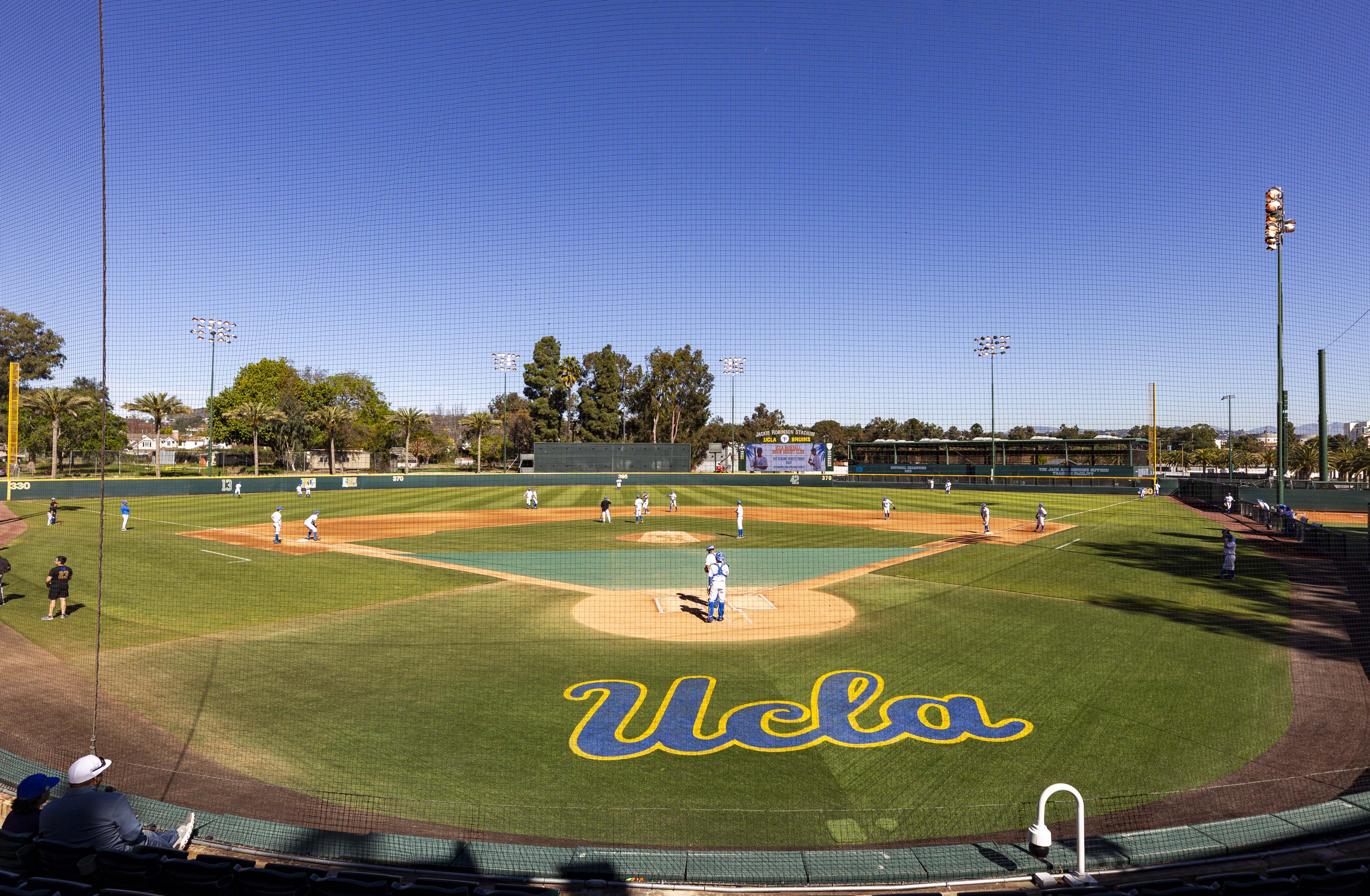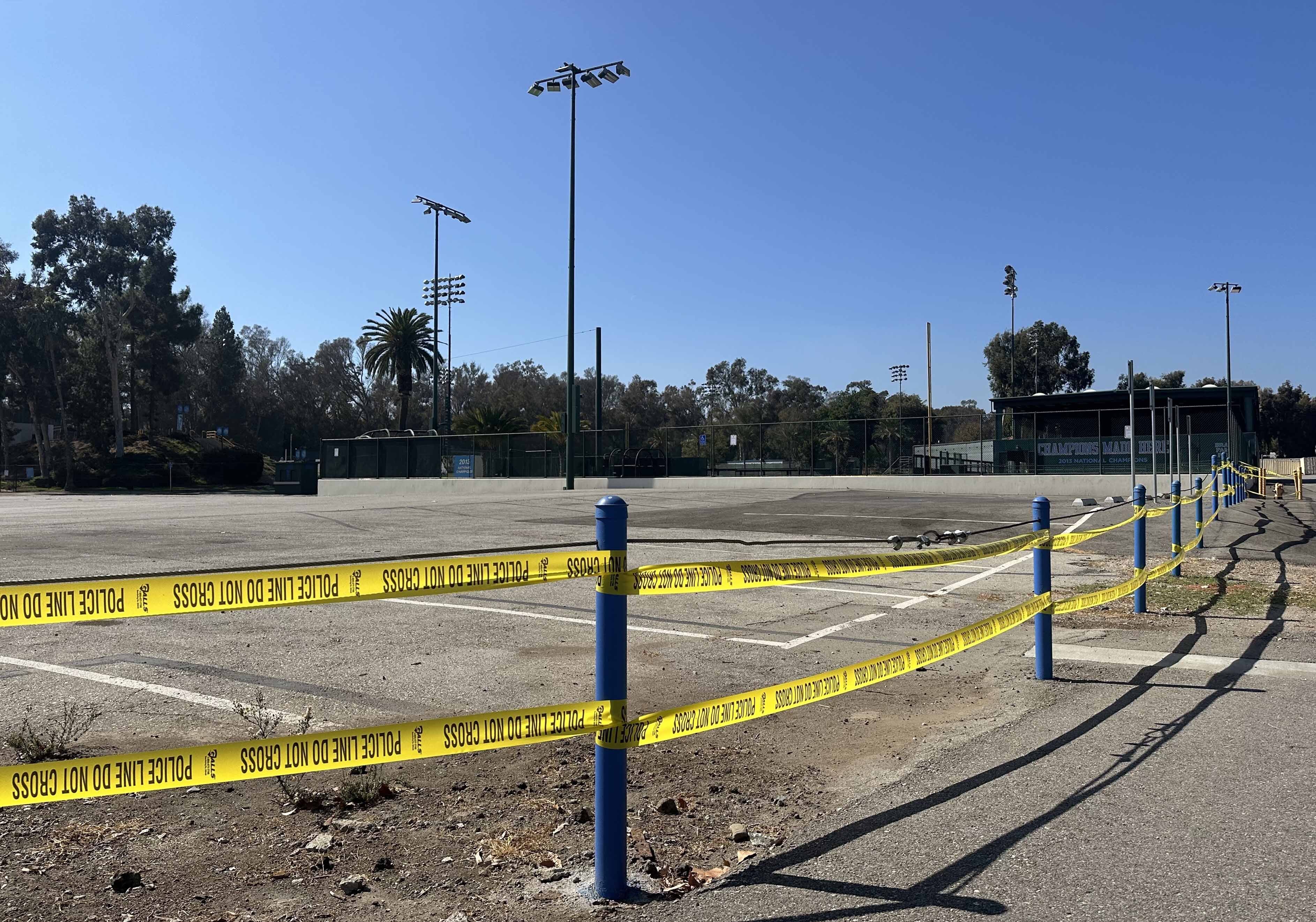Fate of UCLA baseball’s stadium is unknown, but Bruins will persevere
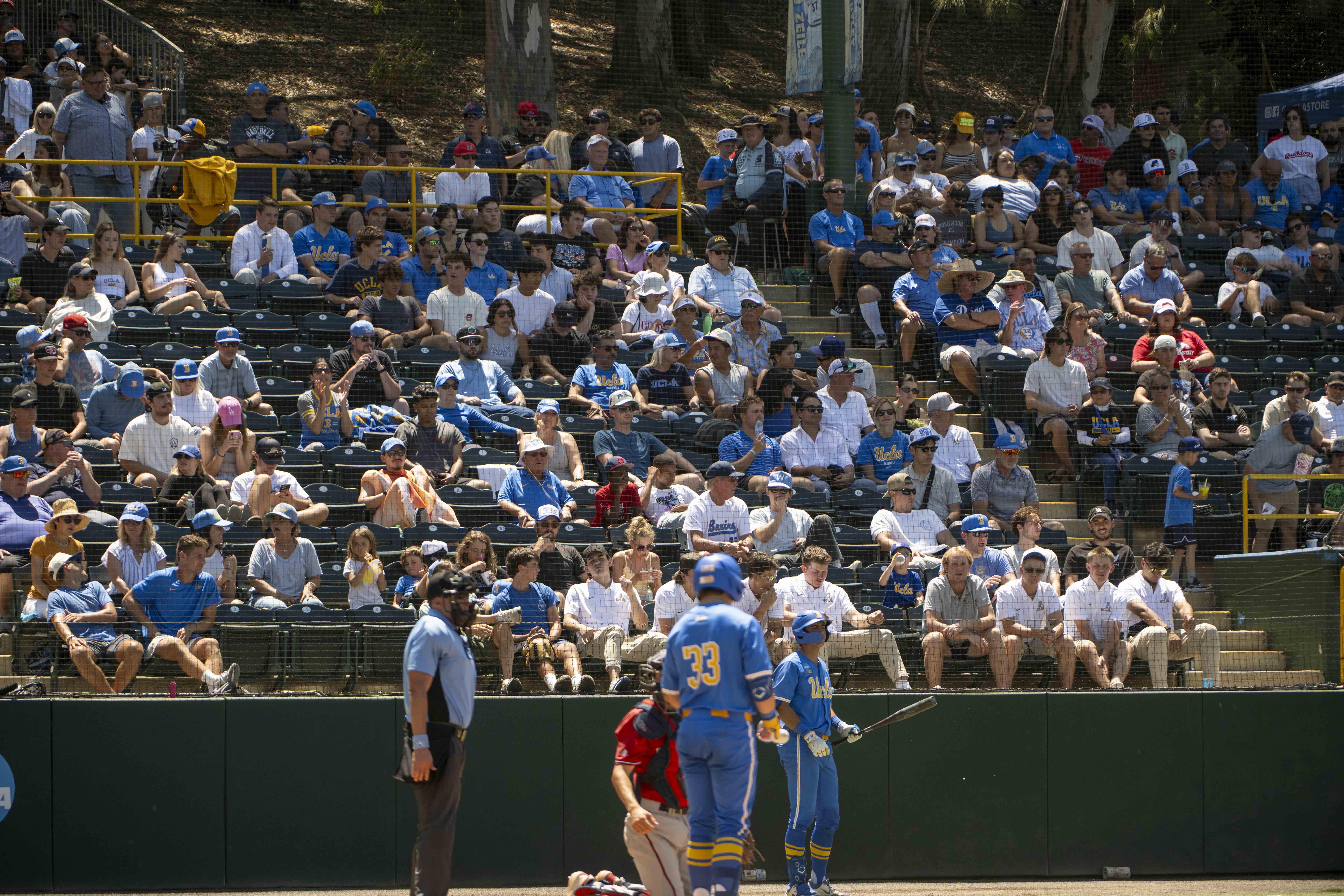
The stands filled for the first time this season to watch the Bruins kick off their first regional since 2022. (Nicolas Greamo/Daily Bruin senior staff)
By Kai Dizon
June 8, 2025 8:56 p.m.
I filed into my seat at Jackie Robinson Stadium on May 30, attending what felt like my 100th contest at the ballpark.
Only this time, I actually had to push my way through a crowd as I navigated the concourse.
I wasn’t alone.
1,245 spectators filled the ballpark for the Bruins’ first home NCAA regional contest in five years. It was the largest crowd I’d ever seen in my over two seasons covering UCLA baseball.
And with Jackie Robinson Stadium averaging just 618 attendees per game during the regular season, filling the venue to nearly 70% capacity may have been the best way to honor UCLA’s home of 45 seasons as the Bruins prepare for the unknown.
In September, a federal court ruled that the lease between the Department of Veterans Affairs and UCLA for the stadium’s land was illegal. A couple weeks later, a judge barred the Bruins from the field. And it wasn’t until around a month later, when UCLA doubled its lease payment for the year that they regained rights to the ballpark until July.
After that, it is anybody’s guess.
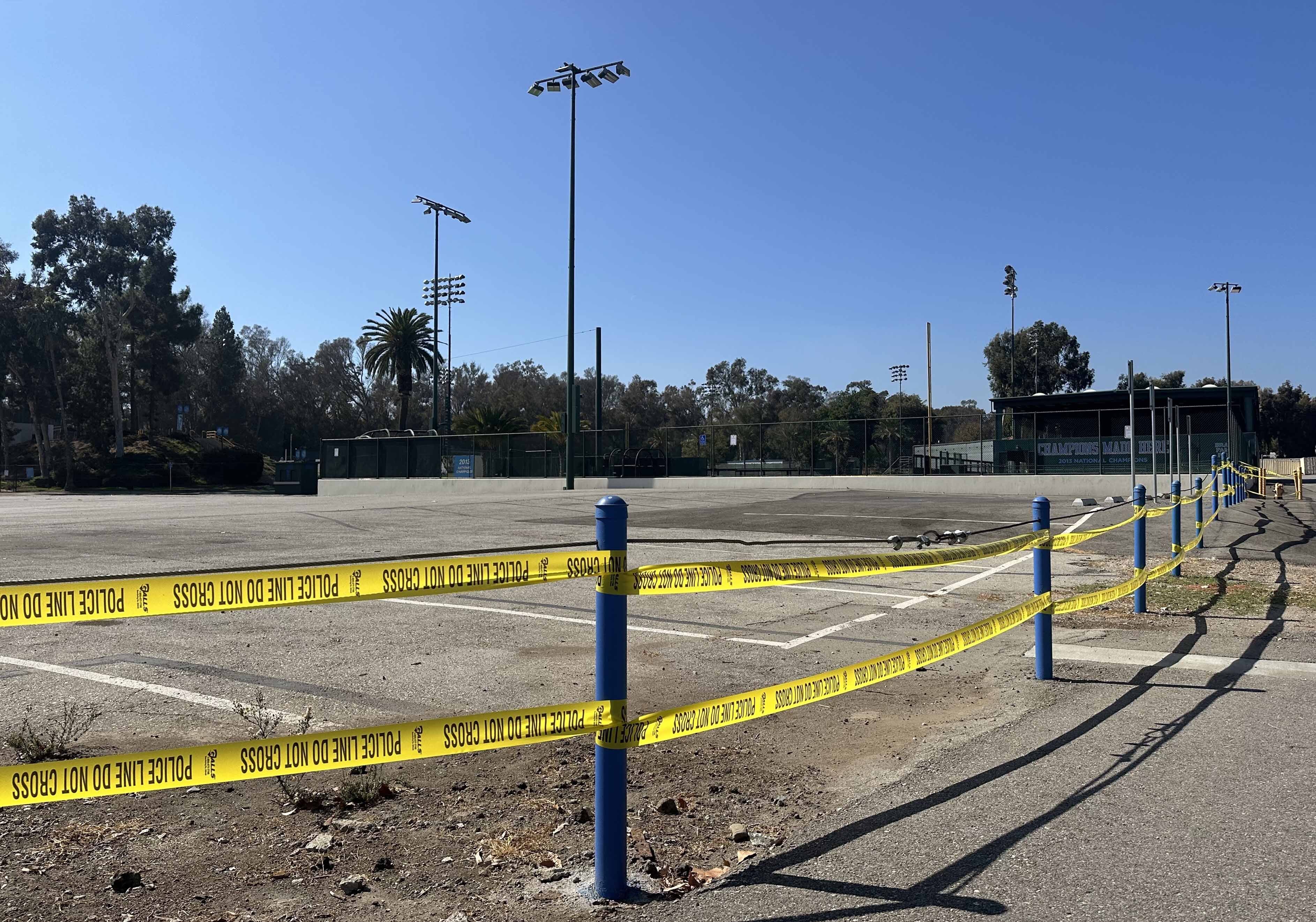
Theoretically, if the Bruins lose the stadium, the land would be converted into housing or infrastructure prioritizing veterans. It’s hard to argue against helping veterans experiencing homelessness – a demographic that Los Angeles has more of than any other American city.
If it comes to it, losing their home park won’t be easy for the Bruins. I hope the team celebrated hosting the program’s eighth regional at the ballpark – win or lose – as much as they could. But while there isn’t a clear-cut solution to where UCLA could play after this year, the Bruins could be better off with a new home.
The ballpark’s capacity, at just over 1,800, is relatively small. Even then, the Bruins haven’t had 1,600 or more people at a single game this season. Fans weren’t allowed to park at the stadium even before a judge ordered the VA to build modular housing on the ballpark’s parking lot – instead, they were told to park in Westwood before shuttling to the field.
There isn’t consistent transportation from the Hill to Jackie Robinson Stadium, and student fans are typically few and far between, despite free attendance with a BruinCard.
Considering the ballpark is around two miles away from campus, I’d venture as far as to say most students don’t know the field exists, much less have gone to a game.
There also isn’t much space for the press or media. The team’s own broadcast and radio announcers frequently call games from outside the press box behind home plate.
And during the NCAA regionals, the team converted their on-site weight room into a media room, inconveniencing the players. Before starting the LA regional’s first game, junior right-hander Michael Barnett had to work around media equipment and personnel as he warmed up with a cable machine.
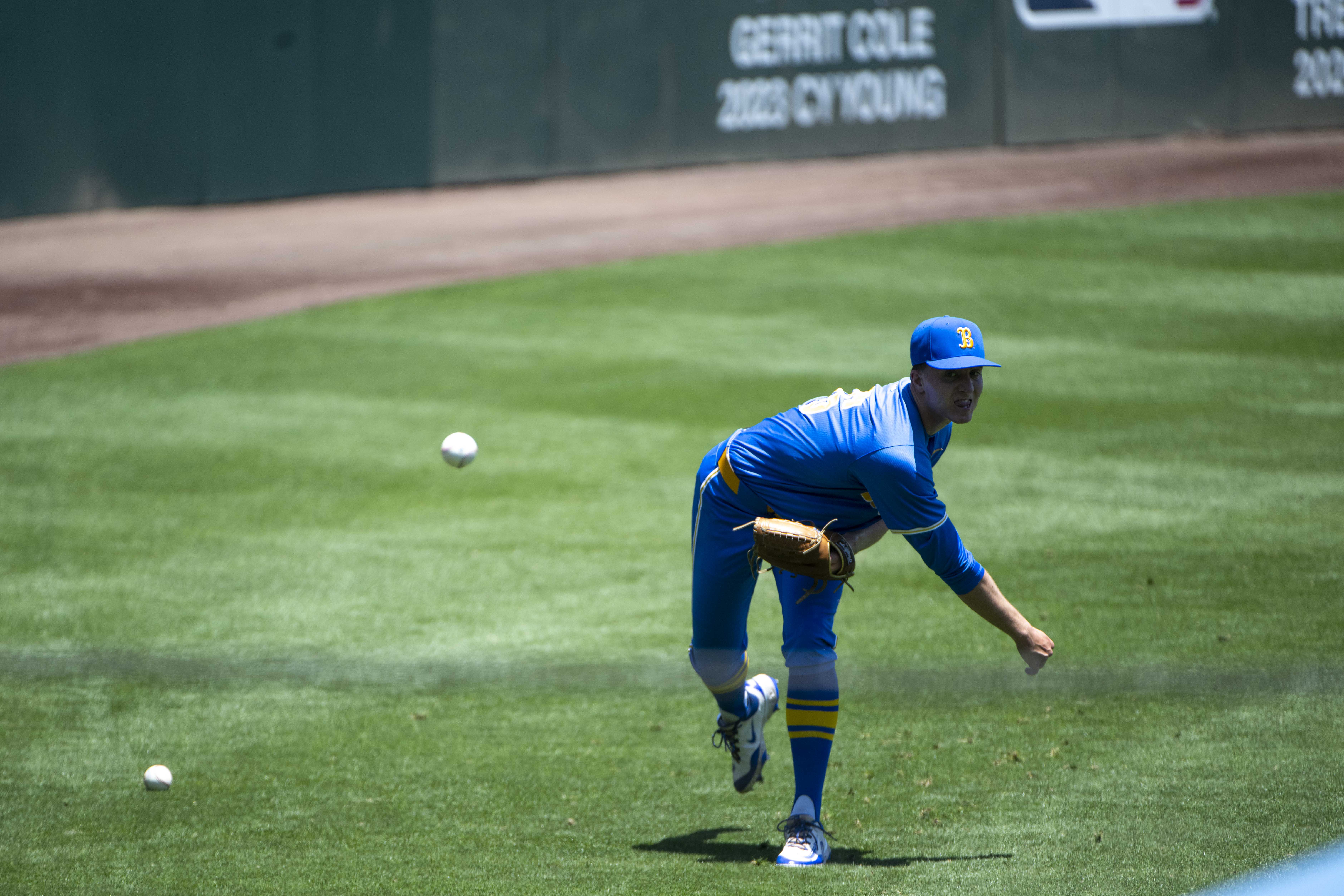
Nonetheless, for the month UCLA was without the ballpark, the Bruins seemed to make do.
While unsustainable for an extended amount of time, the Bruins managed a fall practice slate without a home field by using other campus complexes, including the intramural fields and nearby high school and junior college fields.
Coach John Savage and players like sophomore shortstop Roch Cholowsky have credited the time the team spent busing to practice every day as critical to building the camaraderie that fueled their 2025 turnaround, winning 20 more regular season games than they did in 2024.
The dream for many may be an on-campus ballpark – which UCLA had in Joe E. Brown Field from 1939 to 1963 before it was demolished to build Pauley Pavilion. And though I’d argue in favor of a ballpark instead of Drake Stadium, the chances of that happening seem slim. Long term, the Bruins would probably have to find somewhere to build a new home.
Funding such an endeavor is likely even more of a nightmare than finding the land to host it.
But UCLA Athletics credits the construction of Jackie Robinson Stadium to donations from former Bruin Hoyt Pardee, a teammate of Jackie Robinson. And with the ample talent that has gone from Westwood to MLB in the past few decades, perhaps there are finances to be found.

Regardless, in the short term, UCLA would have to play its home games elsewhere, which may not be as horrible as it sounds.
UCLA spent the 1980 season playing at Pepperdine’s Eddy D. Field Stadium in Malibu when Sawtelle Field was being renovated into Jackie Robinson Stadium. And the Bruins did better without a real home, going 31-22-3 in 1980 but 21-35 the following year.
Meanwhile, USC has spent the last two seasons splitting home games between Loyola Marymount’s Page Stadium and Great Park in Irvine as their on-campus ballpark, Dedeaux Field, underwent renovations. The Trojans have gone 68-51 over that stretch, earning an NCAA tournament berth this season.
The Bruins could also play a share of their games at USC’s ballpark when it reopens for the 2026 season.
While the idea of the Bruins playing their home games at their crosstown rival’s field may seem asinine, UCLA football did call the LA Memorial Coliseum its home for over 50 seasons before moving to the Rose Bowl permanently in 1982.
Again, the fate of Jackie Robinson Stadium isn’t set in stone. In fact, the Bruins have been in a similar spot before.
In 2011, the American Civil Liberties Union sued over the legality of the VA’s leases – including the one between it and UCLA for the ballpark – which threatened the team’s ability to use the field in 2014. Ultimately, however, the school and the VA signed a new lease to keep the stadium in UCLA’s hands in 2016.
Perhaps the VA and UCLA will work out a new lease again.
Perhaps a new ballpark gives the program a boost.
Perhaps the Bruins would be better off without the recurring legal – and possibly moral – nightmare.



